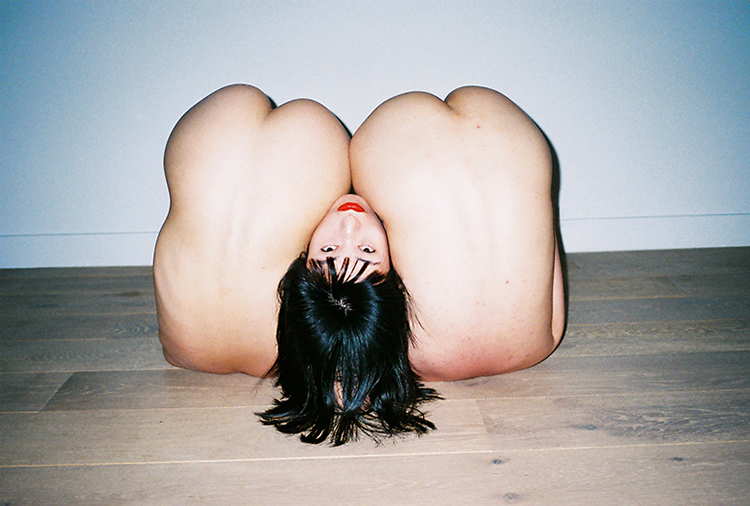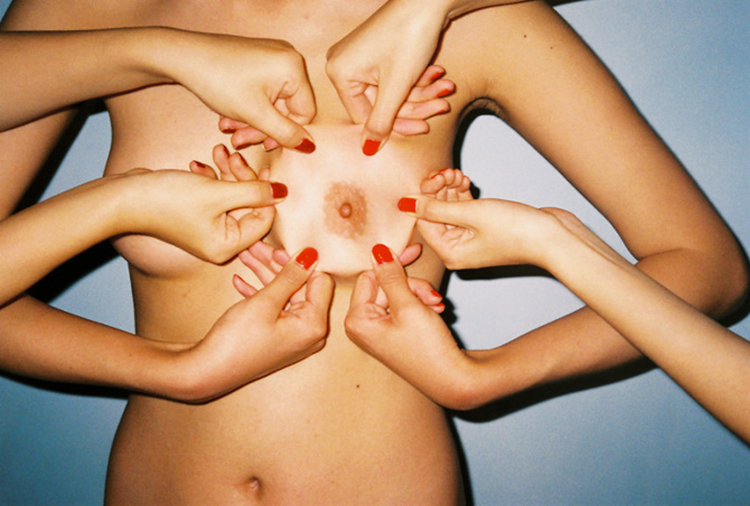Shows
Ren Hang’s “Human Love”


The foreknowledge that Ren Hang lost his battle with depression and ended his life at the age of 29, just eight days after the opening of his exhibition in Stockholm, makes it hard to look at the works without reading the images as complex statements. In interviews, the young photographer was habitually terse, offering minimal justification for his creative choices and never allowing himself to be seduced by questions relating to intentions, let alone meanings. For example, talking with Vice he says, “I just grasp whatever comes into my mind, arrange that in front of me and take a photo of it.”
Perhaps the selection of works for the exhibition “Human Love” at Stockholm’s fashion-conscious Fotografiska is one that connects to the spirit of the city’s own expressive cultural history, exemplified by figures such as August Strindberg (1849–1912) and Ingmar Bergman (1918–2007). The choice is prim, steering clear of the sexually explicit images that have sensationalized Ren Hang’s photographs. The exhibition coincides with the publication of a generous photo book, which provides a more comprehensive survey of the artist’s oeuvre that queers the modesty of the collection on offer in this exhibition.

Four images have been enlarged to the height of the wall and these define the mood of the show. At first glance, one image appears to be a desert landscape of sandy hillocks but these mounds adjust to become an image of the gently rounded bottoms of five people lying on their fronts. Another enlargement shows the backs of three men perched in a tree, partly obscured by its foliage. Both these images make a harmonious association between nature and nudity. The men in the tree appear pale, like exotic white peacocks, but their symmetrical arrangement suggests control. It is the juxtaposition of his models’ nudity, relaxed to the point of frivolousness, within natural or everyday settings, that gives Ren Hang’s images frisson.
His photographs are immediately recognizable. Maybe this is because his models are Chinese and there are still few images of bodies that do not conform to curvaceous Western examples—even Japanese photographer Nobuyoshi Araki’s relentless examination of the Asian body tends to coerce it toward voluptuous precedents. Ren Hang, on the other hand, showed affection for the natural attributes of his subjects. He celebrated their potential by eschewing voyeuristic objectification and working through the culture of the selfie that has enabled everyone to create multiple personas and to share these characterizations on their social networks. In keeping with this genre, Ren Hang’s settings were never glamorous. His models seem unaffected and independent, but he attached to this a strict formal approach to composition, sometimes recalling Robert Mapplethorpe.


Ren Hang was a self-taught photographer. His earliest works date back to 2008. During the past nine years he adopted several photographic tropes from the 1930s, such as the inversion of figures and using makeup to sharpen definition, which provide his work with a classic aesthetic. In several images, he takes advantage of the camera’s limiting monocular perspective to create illusions where body parts become detached, acting as independent entities. One shows two limbless torsos from behind, their bottoms upmost against a colorless background. The head of a woman, also upside-down, is caught between them. Although it is a simple image, the camera angle conceals information, making it difficult to work out how many people are involved and what they are doing. In other photographs, several people participate, but cropping creates a jumble of dismembered hands manipulating a central figure. In one situation, a woman pinches the rim of her left breast with both hands. Two other pairs of hands appear from outside the frame and copy her gesture; together all six hands stretch the breast into a flat disk, with the nipple at its hub. It is impossible to ascertain whose volition has initiated the action.


The convoluted arrangements of people viewed through the lens of the artist’s depression foregrounds images in the exhibition relating to constriction and asphyxia. Water becomes a malevolent element, never more so than in one image, which could be seen as a self-portrait of sorts, where the head is hidden in a plastic bag full of fish, sealed at the neck. In another related image, a couple floats in a huge fish tank on a bed. Their bodies are locked together in an ecstatic embrace or in a struggle for air. Similarly, the witty sensuality of a picture where an octopus’s tentacles have been braided into the model's hair, shifts from an extravagant emblem of pleasuring to a smothering encroachment that might have originated in Ridley Scott’s Alien (1979).
Several works in the show are set at the precipice of a rooftop in Bejing. The models are positioned at the roof’s edge. In an interview with Kaltblut magazine, Ren Hang observed, “The rooftop is really dangerous. I like to make people feel bit of adrenaline [sic].” What once seemed to be a joyous celebration of trust and touch now works in a different register, recalling the words of poet Stevie Smith: I was much too far out all my life; And not waving but drowning.
Ren Hang’s “Human Love” is currently on view at Fotografiska, Stockholm, until April 2, 2017.







